Concepts
Brainstorming
Early in the process, at a workshop from Gill Wildman and Nick Durrant from Plot, we made an early attempt at resolving what my thesis was trying to do:

Later, we did a brainstorming in exercise where some of my classmates gave me suggestions about what my thesis could be.
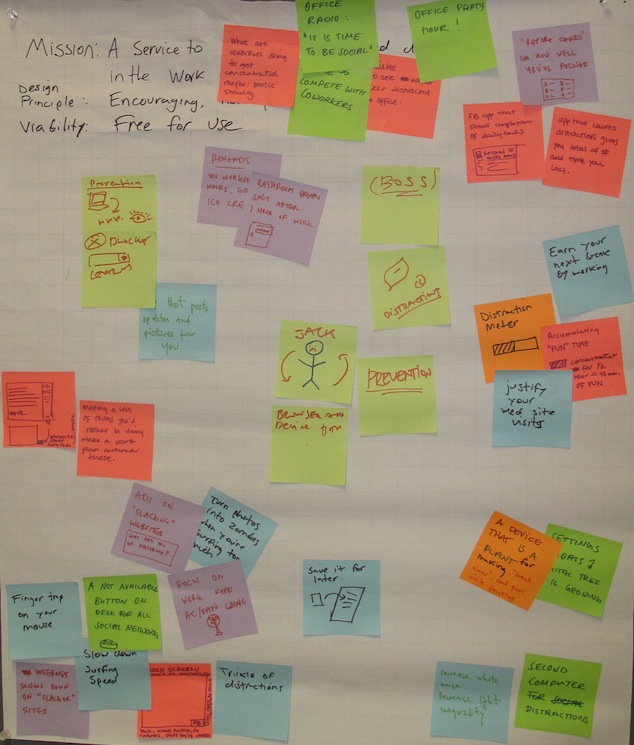
The most surprising aspect of the brainstorms for me was the social components, which I had not previously considered in too much depth. Things like an office-wide distraction-free hour were simple solutions to the problem.
Sketches
Based on the framework I designed, I tried to brainstorm potential concepts that would revolve around the five forces of distraction I had identified.
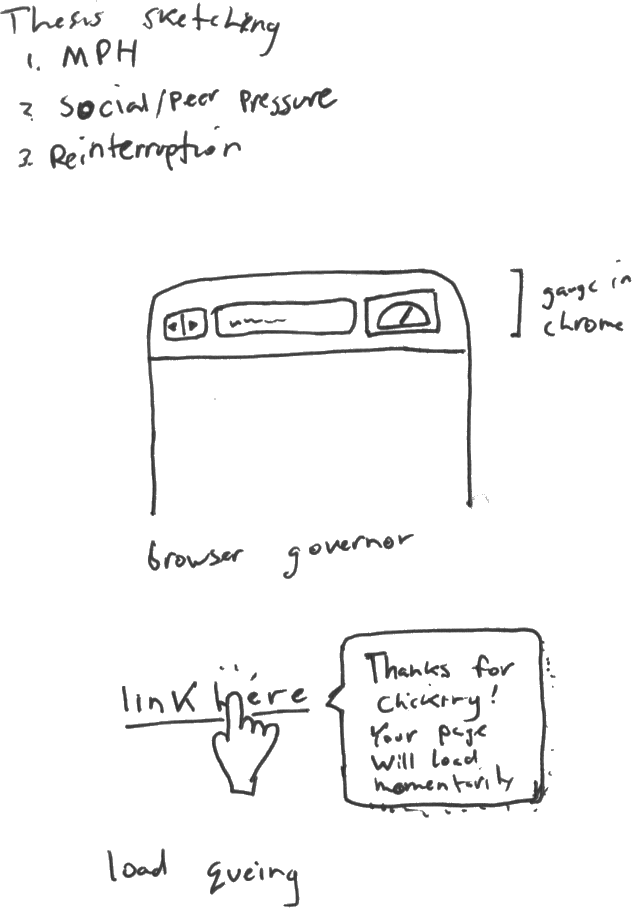
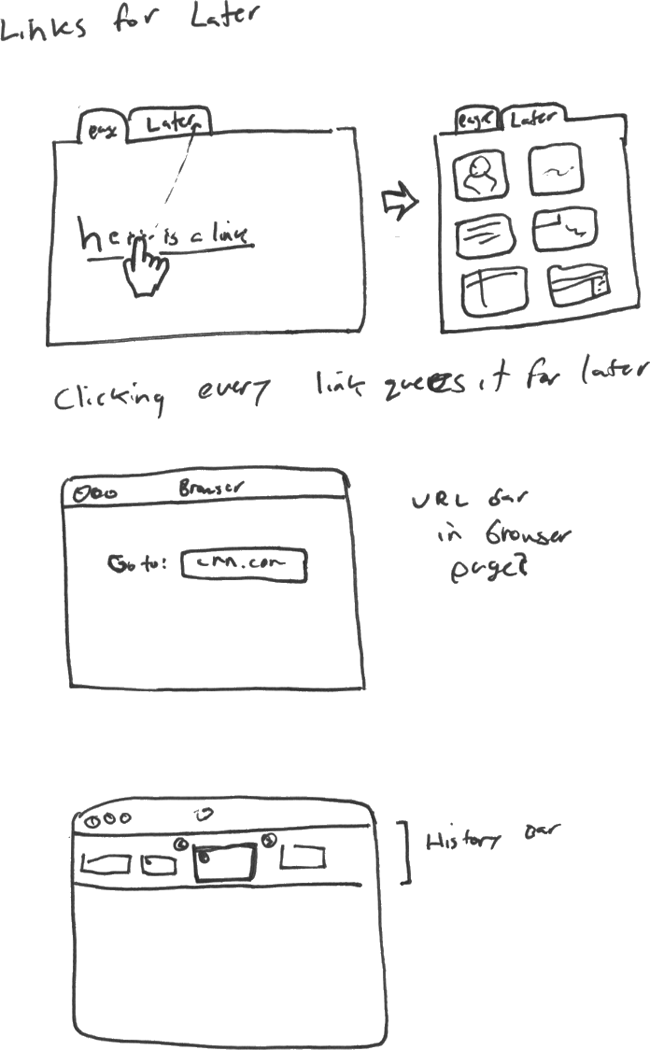
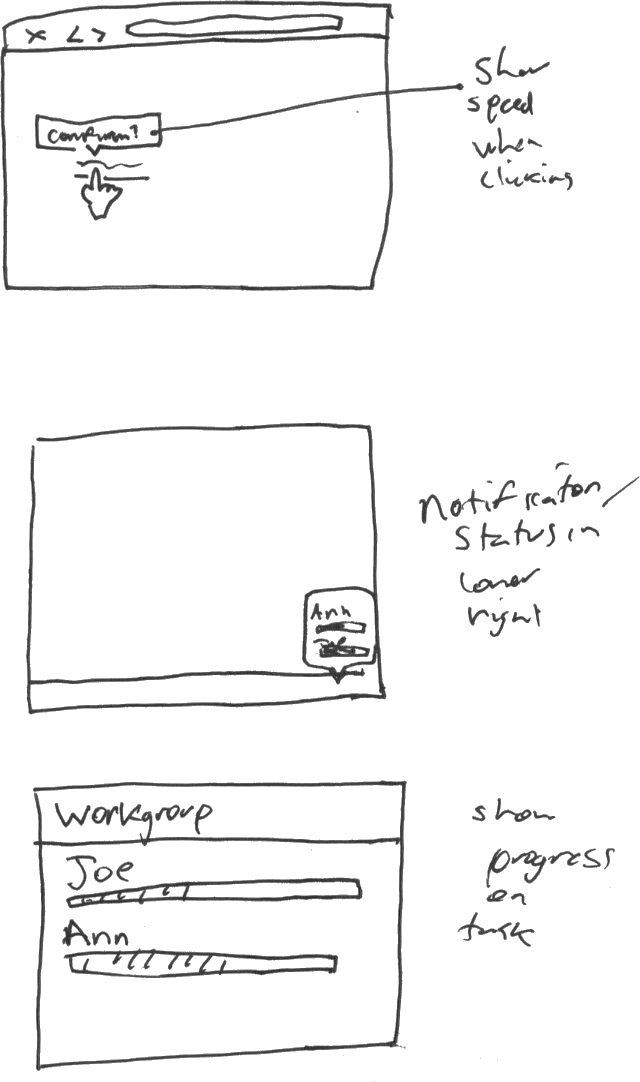












Using some of the sketches above, I proposed three concepts for my thesis project.
Proposed Concepts
Concept 1: Intervention

This concept is based on the observation that one of the most significant factors in reducing distraction seems to be the presence of other people. This concept is basically a small social network for work, or for your workgroup. It would allow everyone in the workgroup to see what everyone else is doing, so that when someone is feeling distracted, a coworker could step in to help. This would be a system to encourage collaboration, which should in turn make work more attractive and distraction less attractive. It would also formalize breaks, so that a user could have dedicated private time to distract themselves with whatever they would like.
In terms of the five forces, this concept increases ability, because it encourages coworkers to help you. It reduces interest, because no one likes having someone “catch” them doing something distracting at work. Finally, it increases pleasure by giving users a formal break to look forward to.
Concept 2: Speedometer
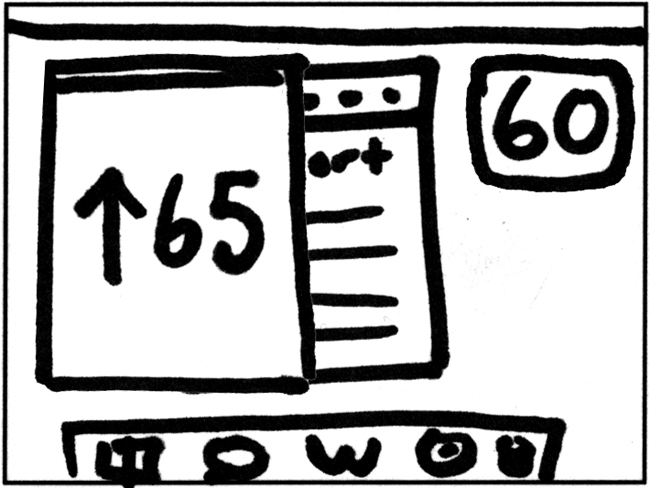
This concept would be a speedometer to keep track of how you are doing throughout the course of the day by using a speed metaphor to measure your distraction. As you distract yourself, you would speed up, and as you do work, your speed would slow down. (Though the opposite metaphor might make more sense.) It would also hook into some of the common distractions, so that it would tell you how much your speed would slow down before you checked Facebook.
This concept would increase interest in accomplishing the goal, because like to see data visualizations. It would also increase excitement, because it would give users a goal to work towards. It would also increase the pleasure of the goal and decrease the pleasure of the distraction, because it would give positive and negative responses, respectively.
Concept 3: Reinterruption

This concept is more of a feature than a particular service, but it’s based on the observation that one of the most distracting things at work is interruptions. This concept would flip the idea of distractions as interruptions by turning your work into an interruption when you ignore it. It would be come increasingly irritating the more you ignore until you finally return to work.
Analyzing this concept in terms of the five forces, it would increase excitement of the goal, because it would turn it into an interruption to get a user’s attention. It would also decrease the pleasure of distraction, because it would trigger a negative response every time it’s acted on.
Final Concept
For my final design concept, I combined some of the pieces from the earlier concepts.

Copyright © 2010 - 2011 Eric St. Onge
Please send questions or comments to eric at ericstonge dot com.